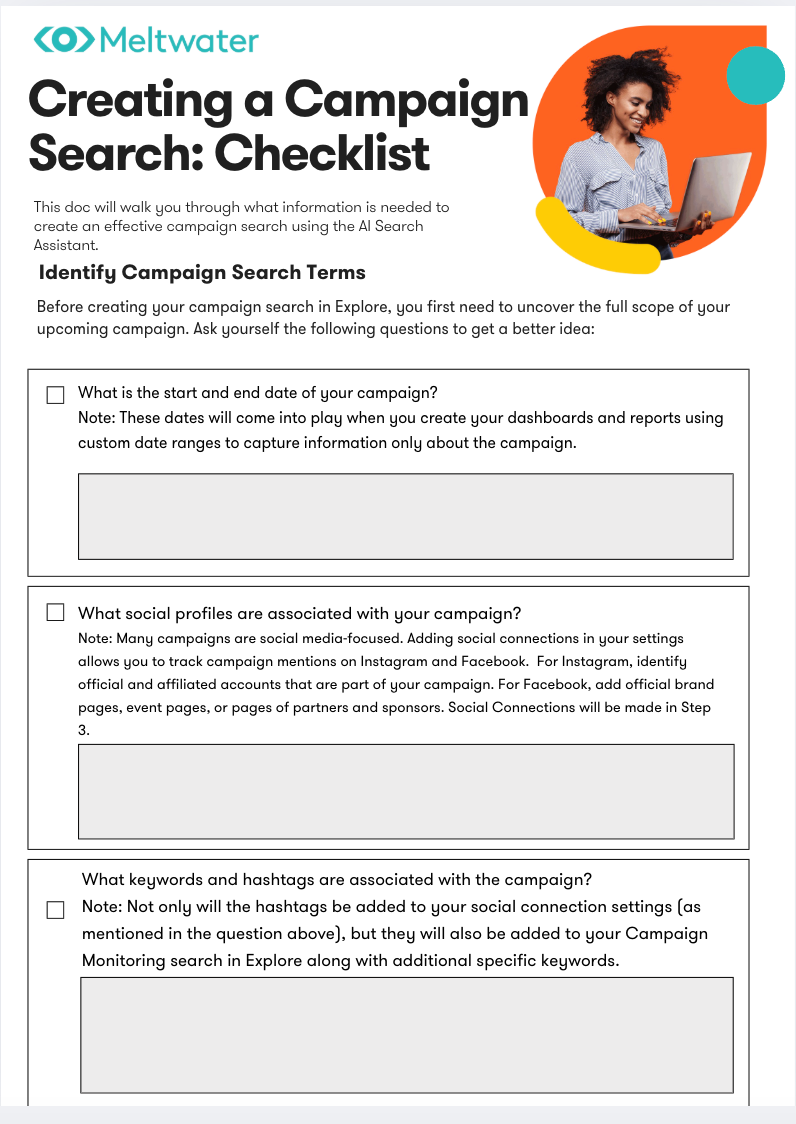If you want to monitor an upcoming campaign, and dive deeper into real-time insight into campaign performance, audience engagement, and media coverage, this toolkit provides a step-by-step process with videos.
Step 1: Identify what you need to know
Before creating your Campaign Monitoring search in Explore, you must have a complete grasp of the campaign, who it involves, the keywords and hashtags associated with it, and have completed some initial setup. Ask yourself the following questions to get a better idea:
- What is the start and end date of your campaign?
- Are your social connections set up in your Meltwater Settings?
- What keywords and hashtags are associated with the campaign?
- Are you working with any influencers for this campaign?
- Is the campaign social-focused, or will it also include news and broadcast?
- Are you working with other brands or partners for this campaign? If so, who are they?
- Do you have an existing announcement for the campaign?
Step 2: Identify your search terms
If you're new to Campaign Monitoring, we’ve created a digital checklist that introduces you to key elements you can include in your searches. It's beneficial to complete this worksheet before diving into the Explore. You will be able to prompt the AI Search Assistant with this information.

Step 3: Set up social connections in settings
Or read the How to Guide.
Step 5: Understand your results
Monitor mentions of key trends and technologies within your campaign using Explore’s Brand Analytics. Track narratives, sentiment, and engagement highlighting market shifts, new technologies, and evolving consumer behavior.
Step 6: Save your search
Step 7: Set up alerts
Or read the How to Guide.
Tip: Below are the most popular alerts to create for a campaign.
- Spike Detection: be notified when there is a sudden spike in the number of mentions related to your campaign. This can indicate growing public interest or concern that requires immediate attention.
- Sentiment Shift: be notified when there is a significant shift in sentiment regarding your campaign-related topics. This can help you detect whether public opinion is becoming more positive or negative.
Step 8: Monitor in real time
Step 9: Dashboards and Reports
Tip: Use the Campaign Report template. This pre-built template includes the most popular insights for campaign monitoring and reporting. You can always remove or add insights based on what you care about most, but this is a great starting place.
Additionally, remember in Step 1 when you considered the start and end dates of your campaign? Those dates can be entered as a custom date range in your reports, so you are only sharing coverage that happened during that period.
